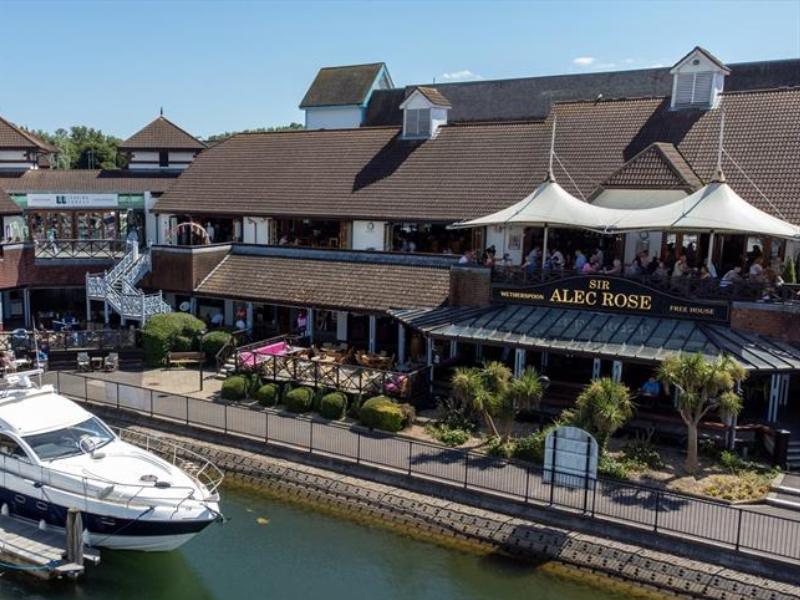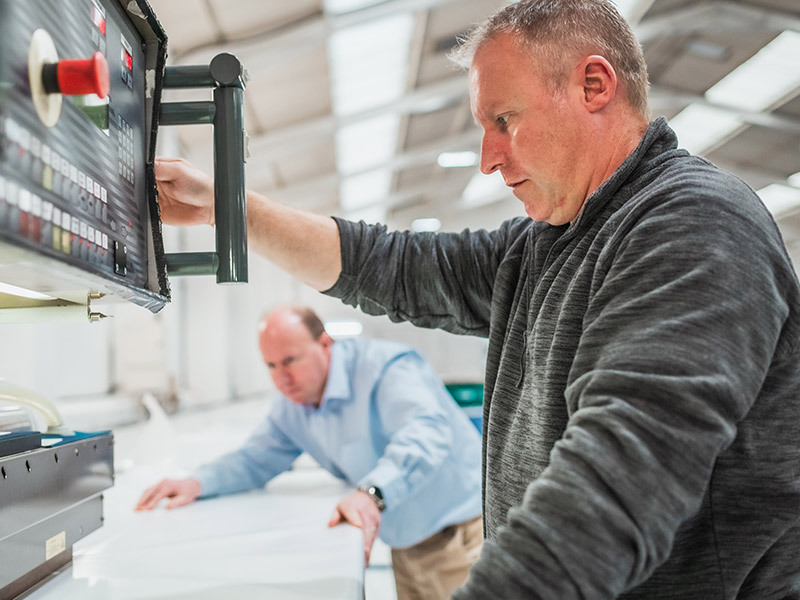
How to Ensure an Effective Tender Process with Tensile Architecture
At J & J Carter, we understand the nuances and complexities involved in creating awe-inspiring tensile architecture. As pioneers in the field, we are committed to both producing stunning structures and ensuring that the journey from conception to completion is as efficient as possible. A cornerstone of this journey is a well-managed tender process – the foundation for successful project execution.
In this blog, we will delve into the key steps and best practices for ensuring an effective tender process, specifically tailored for tensile fabric architecture. Whether you are a seasoned professional or new to this innovative architectural style, this guide will provide valuable insights to help you navigate the tender process with confidence and precision.

Understanding Tensile Architecture
Tensile structures use tension rather than compression to support their weight, often resulting in dynamic, flexible, and visually striking designs. These structures are commonly used for stadiums, exhibition pavilions, fabric canopies, and other applications where a combination of aesthetics and functionality is desired.
Tensile architecture requires a blend of architectural vision, engineering prowess, and material science. As such, the tender process for these projects demands a high level of expertise and attention to detail to ensure that every aspect is meticulously planned and executed.
Step 1: Define Clear Objectives and Requirements
The first step in ensuring an effective tender process is to clearly define the objectives and requirements of the project. This involves understanding the client’s vision, the intended use of the structure, and any specific aesthetic or functional requirements.
Key considerations include:
- Purpose of the Structure: Define what the structure will be used for and how it will enhance the space it occupies.
- Design and Aesthetics: Establish the desired look and feel of the structure, considering factors such as shape, colour, and material.
- Functional Requirements: Identify any specific functional needs, such as weather resistance, acoustics, or load-bearing capacities.
- Budget and Timeline: Set realistic budget constraints and project timelines to guide the tender process.
By having a comprehensive understanding of these factors, you can create a detailed brief that serves as the foundation for the tender documents.
Step 2: Develop Comprehensive Tender Documents
Comprehensive tender documents are essential for conveying the project’s requirements to potential bidders. These documents should include detailed specifications, drawings, and any other relevant information that will help bidders understand the scope of the project. J & J Carter will support you by utilising our full design and engineering service.
Key components of tender documents include:
- Project Overview: Provide a summary of the project, including its purpose, location, and any unique features.
- Technical Specifications: Detail the technical requirements, including materials, structural design, and performance criteria.
- Design Drawings: Include detailed drawings and renderings that illustrate the desired design and dimensions of the structure.
- Scope of Work: Define the scope of work for the project, including tasks, responsibilities, and deliverables.
- Evaluation Criteria: Outline the criteria that will be used to evaluate bids, such as price, technical expertise, and experience with similar projects.
These documents should be clear, concise, and comprehensive, providing potential bidders with all the information they need to prepare a detailed and accurate proposal.
Step 3: Prequalify Bidders
To ensure that you receive high-quality bids from qualified contractors, it is important to prequalify potential bidders before inviting them to submit proposals. This step helps to weed out inexperienced or unqualified contractors and ensures that only those with the necessary expertise and resources are considered.
Key criteria for prequalification include:
- Experience with Tensile Structures: Evaluate the bidder’s experience in designing and constructing tensile structures, looking for relevant case studies and project examples.
- Technical Expertise: Assess the technical capabilities of the bidder, including their engineering and material science expertise.
- Financial Stability: Ensure that the bidder has the financial resources to undertake the project, considering factors such as turnover, profit margins, and creditworthiness.
- References and Reputation: Check references and assess the bidder’s reputation in the industry, looking for feedback from previous clients and partners.
By prequalifying bidders, you can create a shortlist of qualified contractors who can deliver the project to the highest standards.
Step 4: Conduct a Thorough Tender Evaluation
Once you have received bids from prequalified contractors, the next step is to conduct a thorough evaluation to select the best proposal. This process involves comparing bids against the evaluation criteria outlined in the tender documents. Key steps in the evaluation process include:
- Initial Screening: Administer an initial screening to ensure that all bids meet the minimum requirements and comply with the tender documents.
- Technical Evaluation: Assess the technical aspects of each bid, considering factors such as design, materials, construction methods, and project management plans.
- Financial Evaluation: Compare the financial aspects of each bid, including cost estimates, pricing structures, and payment terms.
- Risk Assessment: Evaluate the potential risks associated with each bid, considering factors such as project complexity, contractor experience, and potential challenges.
- Interviews and Clarifications: Conduct interviews with shortlisted bidders to clarify any aspects of their proposals and gain further insights into their approach.
The goal of the evaluation process is to select the bid that offers the best value for money while meeting the technical and functional requirements of the project.
Step 5: Foster Transparent Communication and Collaboration
Effective communication and collaboration are crucial for a successful tender process. This involves maintaining open lines of communication with all stakeholders, including clients, contractors, and consultants.
Key practices for fostering transparent communication include:
- Regular Updates: Provide regular updates to all stakeholders on the progress of the tender process, including key milestones and decisions.
- Clarification Meetings: Hold clarification meetings with bidders to address any questions or concerns and ensure that they have a clear understanding of the project requirements.
- Feedback Mechanisms: Establish feedback mechanisms to allow stakeholders to provide input and raise any issues or concerns.
- Document Management: Implement a robust document management system to ensure that all tender documents are easily accessible and up to date.
By fostering transparent communication and collaboration, you can build trust and ensure that all stakeholders are aligned and working towards the same goals.
Step 6: Negotiate and Finalise the Contract
Once you have selected the preferred bidder, the next step is to negotiate and finalise the contract. This involves reviewing and negotiating the terms and conditions of the contract to ensure that they are fair and balanced.
Key considerations during the contract negotiation process include:
- Scope of Work: Ensure that the scope of work is clearly defined and agreed upon by both parties.
- Payment Terms: Agree on payment terms that are fair and manageable for both parties, considering factors such as payment schedules, milestones, and retainage.
- Risk Allocation: Clearly define the allocation of risks between the parties, including responsibilities for delays, defects, and other potential issues.
- Performance Guarantees: Include performance guarantees and warranties to ensure that the contractor delivers the project to the required standards.
- Dispute Resolution: Establish mechanisms for resolving disputes, such as mediation or arbitration, to ensure that any issues are resolved in a timely and efficient manner.
By carefully negotiating and finalising the contract, you can ensure that both parties have a clear understanding of their responsibilities and obligations, reducing the risk of disputes and delays.
Building the Future with Confidence
We believe that a well-managed tender process is the cornerstone of successful tensile architecture projects. By following these steps and best practices, you can ensure that your tender process is efficient, transparent, and effective, resulting in high-quality bids and successful project outcomes.
Tensile architecture offers endless possibilities for creating innovative and inspiring structures, and a robust tender process is essential for turning these possibilities into reality. By defining clear objectives, developing comprehensive tender documents, prequalifying bidders, conducting thorough evaluations, fostering transparent communication, and negotiating fair contracts, you can build the future with confidence and achieve exceptional results.
Your Vision, Our Expertise in Tensile Architecture
At J & J Carter, we are committed to excellence in every aspect of our work, and we are here to support you throughout the tender process and beyond. Whether you are embarking on your first tensile architecture project or looking to refine your existing processes, our team of experts is ready to help you achieve your vision and create structures that stand the test of time.
We look forward to collaborating with you on your next tensile architecture project. Together, we can create structures that inspire, innovate, and transform spaces. For more information on how J & J Carter can assist you with your next tensile architecture project, please get in touch with us.


